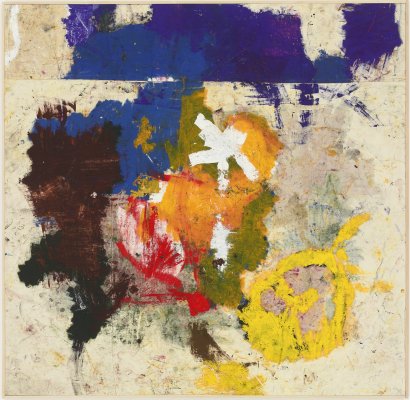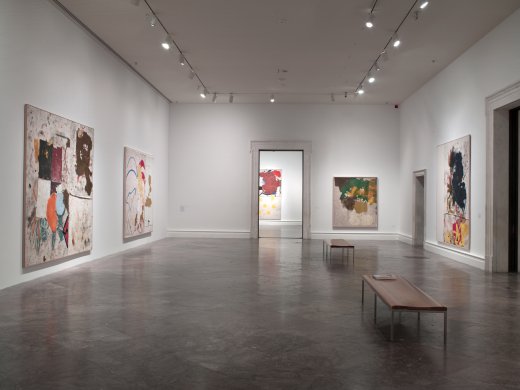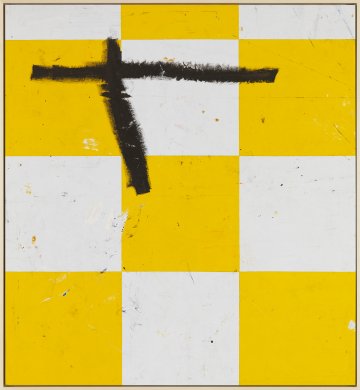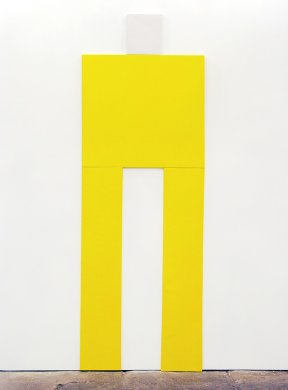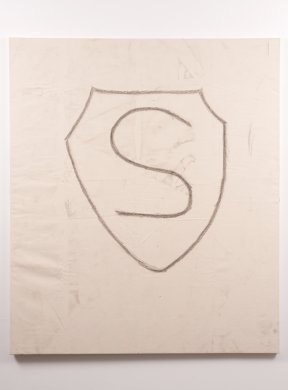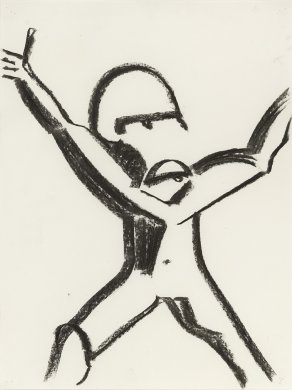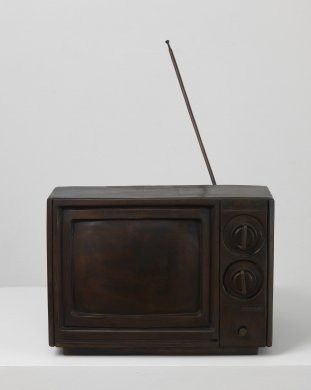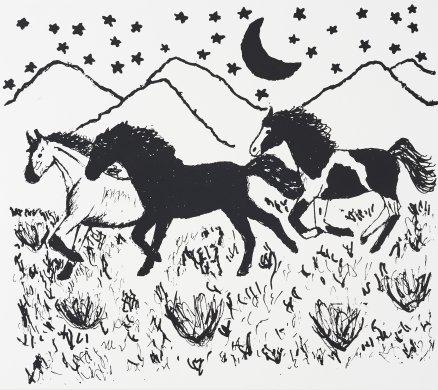Joe Bradley’s mid-career survey is currently on view at the Albright-Knox. On the blog, we’re taking a closer look at each of the artist’s diverse bodies of work from the past decade, including his large-scale abstractions.
Following his Schmagoo paintings, Bradley began adding more paint to his canvases, building up the surfaces with broader ranges of color and filling in more of the raw space. These works became increasingly abstract, their subjects more deeply immersed and no longer immediately legible as drawn imagery. Paintings like East Coker demonstrate Bradley’s engagement with art history, especially the painterly languages of Abstract Expressionism.
Around 2011, Bradley began making his larger canvases by working on the studio floor, a setup that allowed him a bird’s-eye view and the opportunity to be in the painting as he made it. Footprints made while the canvas was on the studio floor became as important to the composition as deliberately painted gestures. Here, as in other paintings of this period, Bradley treats the canvas as a material receptor designed to capture the action of the studio alongside his own compositional decisions.
